How the Invention of the Linear Perspective Has Radically Changed the World.
From "Seeing as Doing" to "Seeing as Knowing".
Perspective is a tool enables artists to depict three-dimensional objects on a flat two-dimensional surface. It allows visualization of depth and makes it possible to place the objects properly within a constructed space. The invention of linear perspective shouldn’t just be seen as an invention of a tool which is only relevant to the field of visual arts. On the contrary, the invention of linear perspective entailed an anthropological shift with itself as Guillen argues.
Before we move on with the anthropological shift that the linear perspective brought with itself in Europe, we should closely examine its ties to science, philosophy and, theology. In the antiquity, the eye was perceived as an active organ. According to Euclid, visual rays proceed as rectilinear lines from the eye to object. The rays form a visual pyramid with the apex in front of the eye. This understanding was called extramission theory. Practically it meant that, in the understandings of the people of antiquity, seeing was reduced to a form of touch. Thus, in the world of antiquity, seeing was doing.
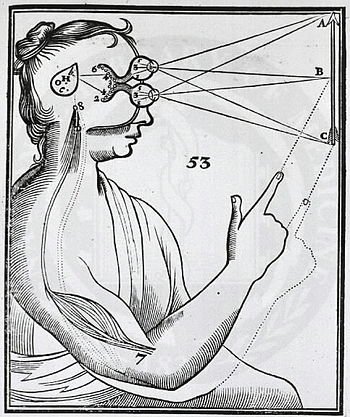
The optic theory (Extramission) of the Antiquity found itself a well-reputed role on Scholastic worldview (The combination of Aristotelian metaphysics and Christian theology) of the Medieval Age as well. Since seeing was doing, one had to decide carefully on where he gazes and how he reconstructs his gaze on two-dimensional surface as in the form of artistic creation. A painting that contains disrespectful elements to the holy symbols could not only result in turning the artist to a sinner, but it could also turn the others into sinners who only see it. The seeing as doing paradigm created the monopoly of the church on the images. The church was, by filtering the images, preventing believers from the wrong gazes which could lead to blasphemy.
When we closely examine those paintings we see that the objects are sized by artists not depending on their distance to the observer. The size is determined by the attributed importance of the figures in the Christian theology. And the color pattern also had a codification. Unlike the globalized market of today’s world, in the medieval age, the number of available colors were limited and the rarest color was considered the most valuable one. For this reason, blue was mostly used as a symbol of holiness. In the paintings, most of the time we either see Jesus or Mary in blue dresses.
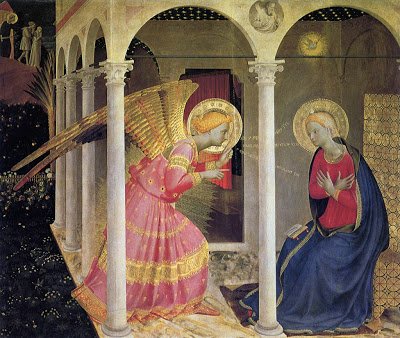
fra-angelico-annunciation
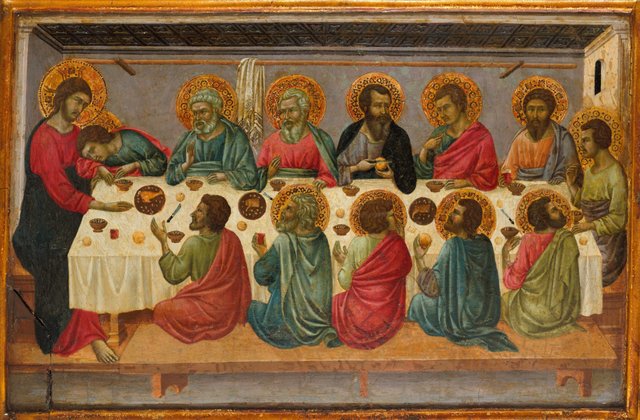
Ugolino di Nerio’s depiction of The Last Supper from 1324-05
By the 13th century, the optic theory derived from manuscripts of Arabic scholar Alhazen had translated into Latin. Alhazen’s empirically proven theory of optics suggested that, contrary to Euclidian optics, light rays were reflecting from an object to the eye. In Alhazenian optics, the eye was not considered as an active organ and this fundamentally challenged the seeing as doing paradigm which was predominant. The eye being a passive recipient of the visual information coming from the outer world made the act of seeing as knowing.
The crucial difference between two paradigms lies in their a priori assumptions. In the seeing as doing paradigm, the outer world was not considered something which has an objective base. It was believed that the outer world was a construct of the eye, thus the subject behind it. On the contrary, according to seeing as knowing paradigm, the visual information coming from the outer world is considered real. This was secularisation and demystification of seeing.
The invention of the Linear Perspective.
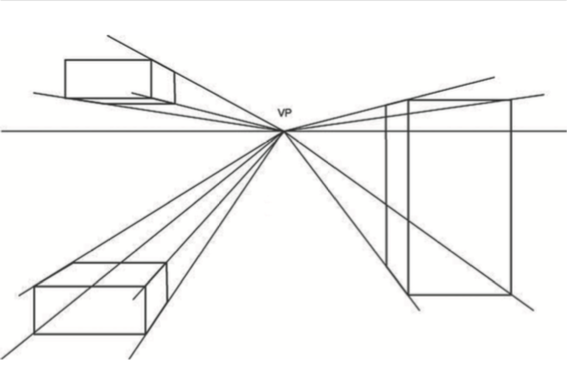
Perspective was invented in the 15th century. Its invention is generally attributed to Phillippo Brunelleschi, a Florentine engineer, architect, and artist. As I explained above, in the 15th-century extramission theory was already considered outdated and cultural elite of early Renaissance were attempting to expand their knowledge about the world. It's no surprise that perspective was invented in Florence. Mathematics and geometry were considered fundamental assets in Florence. As being a trade node between Europe and east, successful conversion of different currencies was vital for Florentine people. Additionally, exporting goods through sea transportation was one of the key economic activities of the province. Thus, optimization of the shipping of the goods required the knowledge of proportioning correctly. For these reasons, mathematics and geometry were taught in the schools. Perspective met the demand for acquiring better depiction and calculation of proportions. It enabled Florentine people to depict the proportions as the eye sees it. Linear perspective enabled traders to master proportions as well as it helped architects to depict the plans of the buildings.
In order to prove the power and utility of linear perspective, Brunelleschi drew the Ortagonal Baptisery of San Giovanni. He carved the painting on a panel and located it to the garden of baptisery. This way, people visited baptisery had a chance to compare the real building and it's depiction on 2d surface.
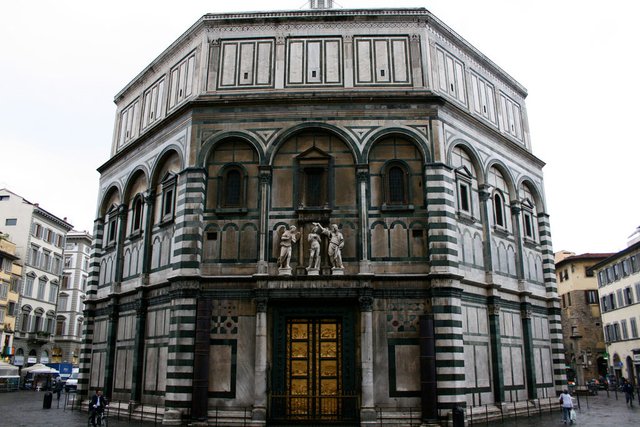
San Giovanni Baptistery
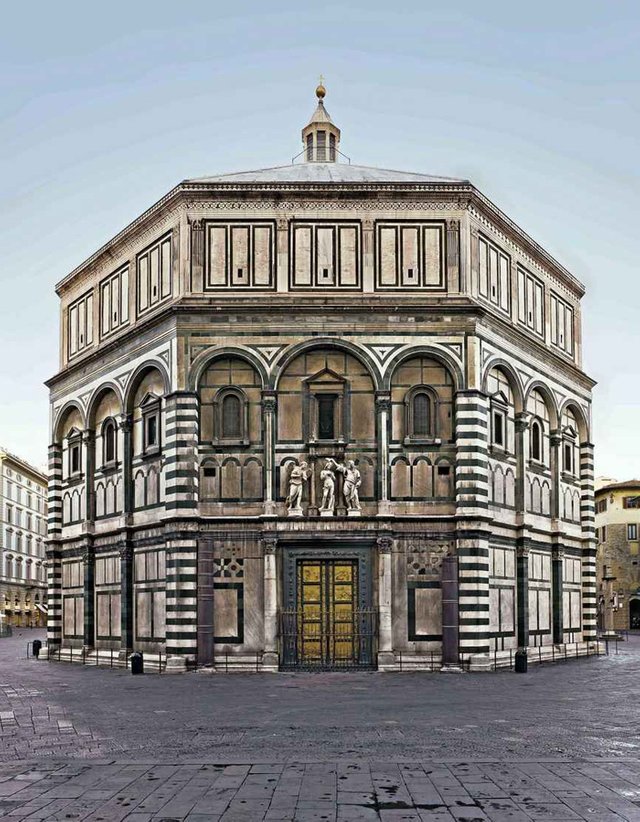
San Giovanni Baptistery by Brunelleschi
Brunelleschi's demonstration was a big success. Many of the artists and architects of his time tried to copy the method. One of them was Leon Battista Alberti who for the first time made a clear codification of linear perspective methodology in his book De Pictura in 1435. Following the methodology put forward by Alberti, true renaissance started in the field of arts. Artists applied the linear perspective method to their paintings.
I put here two reinterpretations of "Annunciation" and "The last supper". In contrast to earlier depictions, in the following ones we can see that the linear perspective was applied by the artists.
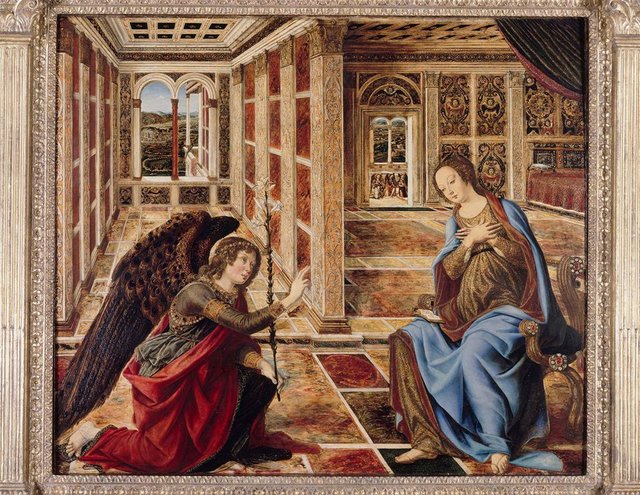
The Annunciation of Mary by Piero del Pollaiuolo, 1470
In Pollaiuolo's depiction of the Annunciation, we can see the checked floor consists of adequately proportioned squares. Artists used checked floor on their paintings to show their mastery on linear perspective technique. Also, the columns look tremendously different than Fra Angelico Annunciation. This depiction has the spatial depth. There is a geometrically constructed space on which all the objects are being placed depending on their sizes distances from the eye. The realistic depiction of the angel demonstrates us the entanglement of two contradictory worldviews, realism and mysticism.
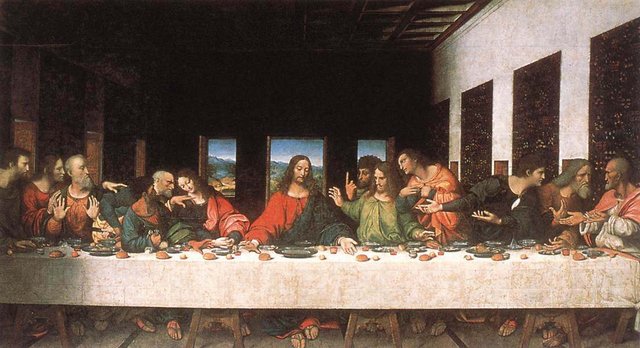
Da Vinci’s Last Supper from 1520
Da Vinci's last supper is also a painting that is created with the linear perspective method. This time we can see the ceiling consists of correctly proportioned squares. Also, the distance between the doors seem natural to the eye sees it. As you may noticed by now, in two paintings there exists an open window which allow us to see the nature and the horizon outside. The notion of horizon was extremely important in renaissance paintings because of the mathematical englightenment caused by linear perspective. Linear perspective demonstrated the infinity of the constructed space. From that point on, horizon was not someting objective, but something relative to the standpoint of the observer.
In the second part I will continue with the notion of Infinity and changes in time perception related to that. Stay tuned :)
Image Resources:
- https://edu.glogster.com/glog/euclid/1mhkl2htj51
- http://beautifulangelpaintings.blogspot.com
- https://www.quora.com/How-is-Renaissance-art-different-from-Medieval-art
- Captured by me from the Book. Phillip Lepenies - Art Politics and Development
- http://www.travelingintuscany.com/engels/firenze/baptistery.htm
- https://www.visitflorence.com/florence-churches/baptistery.html
- https://www.flickr.com/photos/melachel/7988555003
- https://www.quora.com/How-is-Renaissance-art-different-from-Medieval-art
Posted from my blog with SteemPress : http://insannesnesi.com/2018/07/20/how-the-invention-of-the-linear-perspective-has-radically-changed-the-world/
Congratulations @tubi! You have completed the following achievement on Steemit and have been rewarded with new badge(s) :
Click on the badge to view your Board of Honor.
If you no longer want to receive notifications, reply to this comment with the word
STOPTo support your work, I also upvoted your post!
Do not miss the last post from @steemitboard:
SteemitBoard World Cup Contest - The results, the winners and the prizes
Congratulations @tubi! You received a personal award!
Click here to view your Board of Honor
Congratulations @tubi! You received a personal award!
You can view your badges on your Steem Board and compare to others on the Steem Ranking
Vote for @Steemitboard as a witness to get one more award and increased upvotes!